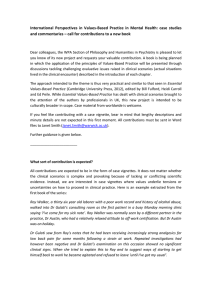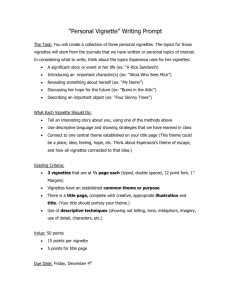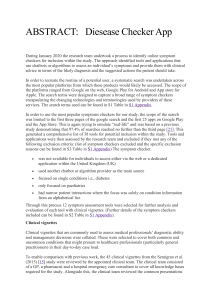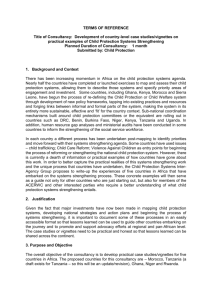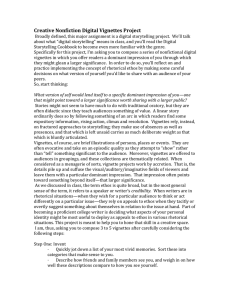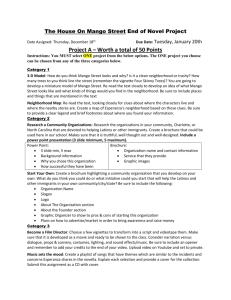The use of vignettes in grounded theory methodology
advertisement
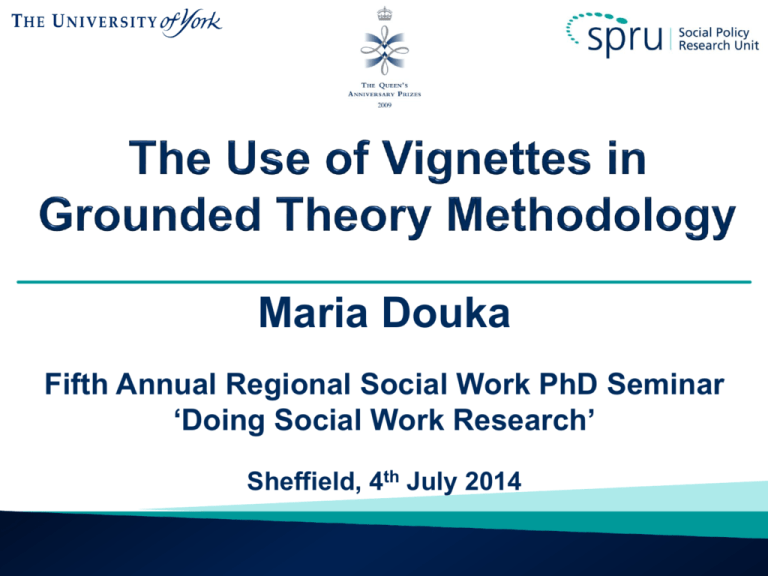
Maria Douka Fifth Annual Regional Social Work PhD Seminar ‘Doing Social Work Research’ Sheffield, 4th July 2014 Definition Use of vignettes Vignettes in the context of GT Examples Limitations of vignettes Conclusion 2 Vignettes are heavily abbreviated case studies of a hypothetical nature They describe a situation in which participants have to build up their answers 3 To break the ice between the researcher and the participant To tap into the participants’ thoughts and feelings To stimulate the discussion and maximise participants’ ability to provide information To describe situations that happen in the respondent’s personal/working lives To establish ways to pool information in a diverse research topic 4 As a method to keep participants more focused on the subject The R avoids asking leading questions The R avoids passive behaviour of participants The R avoids suspicions that the researcher covertly conducting a regulatory inspection 5 As a technique to study sensitive situations As a way to express personal opinions of subjects that are considered too difficult for direct answers As a method when participants have no direct experience and knowledge of the area of study 6 Title of my research project: ‘Continuity of Care for People with Mental Health Problems: The role of Social Workers’ Methodology: Methods: Participants: Grounded Theory Vignettes and semi-structure interviews Social Workers Research carried out in Greece 7 Reasons to use vignettes: Lack of knowledge or theoretical background on CoC of social workers Providing critique on policy issues e.g. Psychiatric reforms under the financial crisis 8 Related research articles: a. Long-Sutehall, Willis H., Palmer R., Ugboma D., Addington-Hall J., Coombs M., (2011), Negotiated dying: A grounded theory of how nurses shape withdrawal of treatment in hospital critical care units, International Journal of Nursing Studies, 48:1466-1474 The project was about the views of nurses on withdrawal of treatment for the dying patient b. Kennedy TJ, Regehr G, Currie R. and E., Ross-Baker G., Lingard L, (2009), Preserving professional credibility: grounded theory study of medical trainees’ requests for clinical support, British Medical Journal, available at: http://www.ncbi.nlm.nih.gov/pmc/articles/PMC2640114 The need for clinical support, requested by medical trainees from their supervisors 9 John is a 54-year-old man who lives alone. He was diagnosed with schizophrenia when he was young. He is currently hospitalised after a serious acute episode. He informed the social worker that he has no place to live as he has not paid the rent on his house for months, and that soon he will be homeless. The social worker has to inform him about what care options are appropriate for him. 10 What “type of care” should a social worker provide for this patient? OR How you think a social worker would respond to this patients’ needs? The “should” and “would” questions Asking indirect questions is a less threatening and intimidating approach for the respondents 11 Participants may express their views in a “socially desirable” way There is distance between the vignette and social reality Actions and beliefs might be different from those described in the vignette 12 Vignettes should not be used as a stand alone method but as a complementary method Vignettes are less threatening approach to interviews Vignettes can be used to pool sensitive information on a subject 13 Thank you! 14


